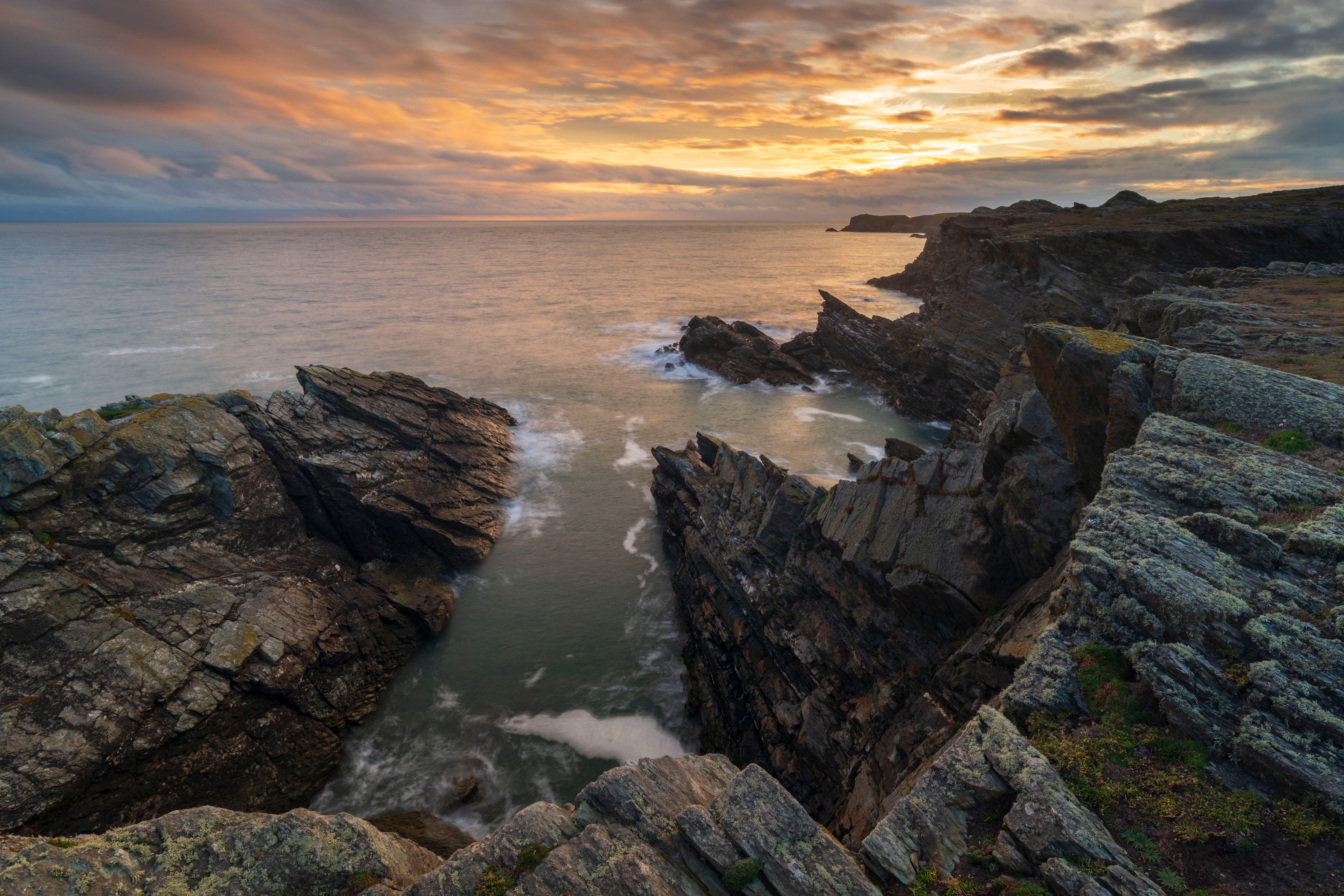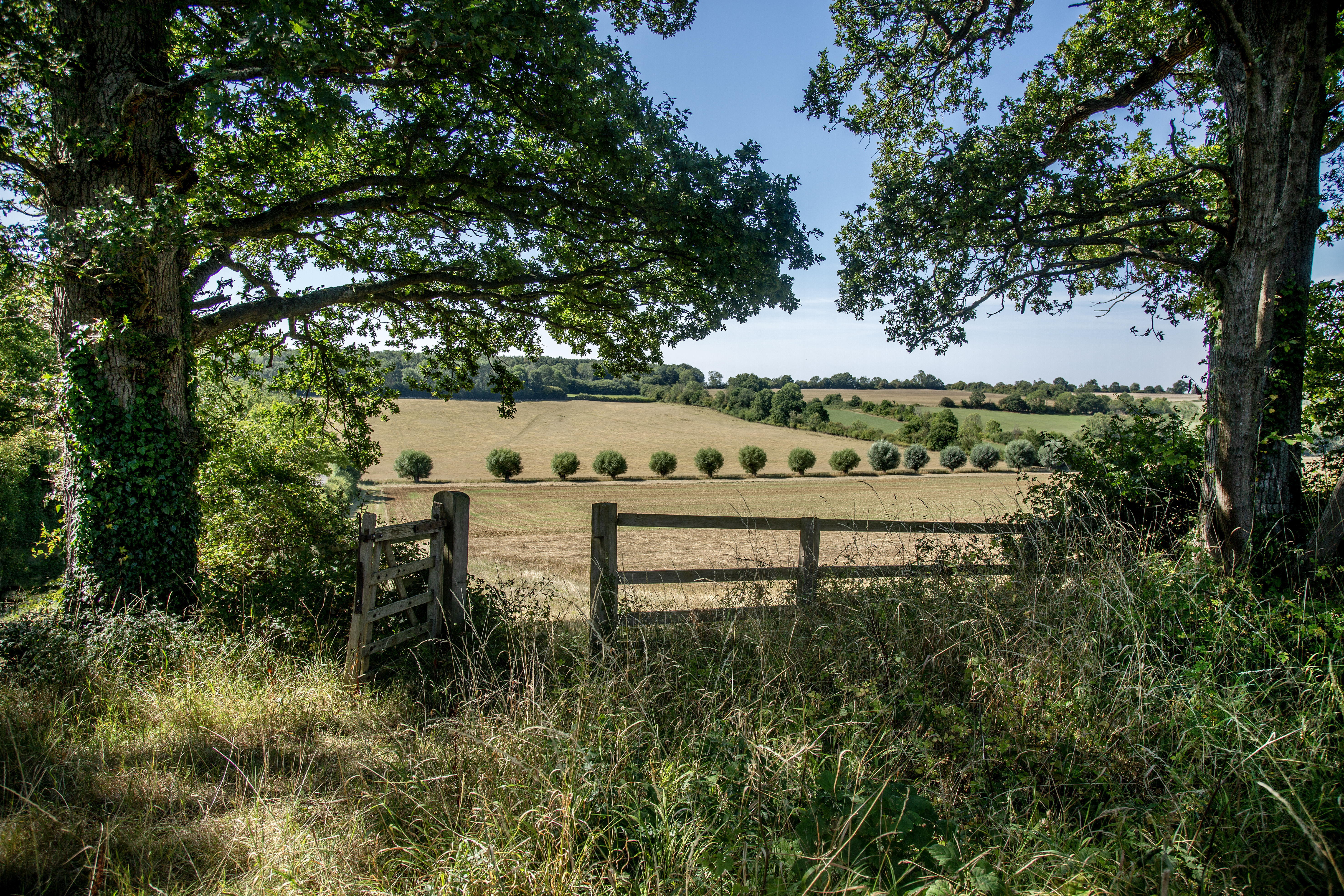Nobody has ever been able to figure out just how long Britain's coastline is. Here's why.
Welcome to the Coastline Paradox, where trying to find an accurate answer is more of a hindrance than a help.


On the face of it, it is a simple enough question: how long is the coastline of the United Kingdom? It is the sort of poser that might pop up in quizzes, but the answer is anything but straightforward.
A recent article in this magazine extolling the charms of Britain’s exquisite, varied, and beautiful coastline quoted a figure of 19,000 miles. Elsewhere, two of the world’s most respected and influential data sources, the CIA Factbook and the World Resources Institute, come up with wildly different results when putting a value to the length of the United Kingdom’s coastline, the former claiming it to be 7,723 miles and the latter 12,251, a discrepancy of almost 4,500 miles.
Great Britain, from a geo-political perspective, is the name given to the main island, upon which most of England, Wales, and Scotland is situated. The United Kingdom extends to include Northern Ireland and the islands associated with each of the four countries, whereas the British Isles consists of the United Kingdom, the Republic of Ireland as well as the Channel Islands and the Isle of Man. Britain is a term used loosely and often only context can determine which of the three is meant.
The coastline of the United Kingdom will be longer than that of Great Britain but shorter than that of the British Isles. As these names are so well defined and widely accepted, it is reasonable to assume that, in referencing the United Kingdom, the CIA Factbook and the World Resources Institute mean the same geographical entity. If so, why do they come up with radically different answers to such a simple question?
The nub of the problem is the very feature of the British coastline that makes it so beautiful and spectacular. It consist of nooks and crannies, rocky inlets and outcrops, broad beaches and peninsulas. A child, looking at a map, might pronounce the twists and turns of the coast as wiggly. The degree of wiggliness of a shape is known as its fractal or Hausdorff dimension and can be calculated fairly readily by those mathematically inclined.
The generally accepted fractal dimension for the coastline of the United Kingdom is 1.25, although some sources put it as high as 1.31. While it is not as wiggly as the coastline of Norway, which has a value of 1.52, it is wigglier than, for example, the coasts of Australia (1.13) and South Africa (1.05). The higher the fractile dimension, the more irregular the shape and the greater the irregularity, the more difficult it is to measure with any degree of accuracy.
A shape with a straight line presents few problems and the only thing that improves the accuracy of the result, and even then only marginally, is the precision of the measuring device used. To measure a shape with many curves, bumps, and wiggles, like a coastline, is a more challenging endeavour, involving a compromise on how to deal with deviations to obtain a result with any pretensions to accuracy.
Exquisite houses, the beauty of Nature, and how to get the most from your life, straight to your inbox.
'His conclusion was that there is no definitive answer and it all depends on how you measure it'
The generally accepted method for measuring a coastline is to take a map, photograph, or digital image and to select a unit of measure (l), which is represented by a scaled down straight line. The straight line is then moved around the image, always ensuring that the two ends of the line are firmly placed on the boundary of the coastline and that the next straight line is positioned at the precise point where the last has ended. To arrive at the total length, simply multiply the number of straight lines that have been used (n) by l.
A moment’s thought, however, will soon reveal there are significant limitations to this methodology. While the starting and end points of each straight line will be on the coastline, the rest of it will almost certainly have missed many of the bays and peninsulas lying in between, some of which will be inside the line and others beyond it. Reducing the value of l will include more of the geographical features of the coastline but will still miss out the smaller bays and coves.
Lewis Fry Richardson was the first, from an academic perspective, to consider the impact of varying the value of l on the calculation of coastlines. In 1951, while carrying out some research into the effect that the length of a border shared between two countries had on the probability of them going to war, he was puzzled by a discrepancy in the stated length of that between Portugal and Spain. The Portuguese reported it as being 987 km long while the Spanish made it longer, at 1,214 km. Possessing a curious mind Richardson decided to investigate further.
He discovered that the unit of measurement (l) had a profound effect on the result. As l decreased, the overall sum increased. Instead of improving the accuracy, measuring in finer detail merely added to the total, something known as the coastline paradox.
Richardson also found that, theoretically, as l approaches zero, the length of the coastline nears infinity. The discrepancy in the length of the border between Portugal and Spain was simply down to the fact that, while they were deploying the same methodology, the l they used in their calculations was different.
To illustrate the point, with l set at 100 kilometres the length of the coastline of Great Britain is calculated to be around 2,800 km. Reducing it to 50 kilometres increases the result by around 600 km to 3,400 km. Even using digital technology produces wildly differing results. A digitized representation of the coastline of Great Britain and its surrounding islands, one using 2.282 million individual vertices, measured the coast line at 11,023 miles. Increasing the amount of coastline contained in each vertex by a thousandfold, so only 2,282 were used, shrank the coastline by over 7,000 miles to 3,876.
Richardson’s discovery prompted further research, culminating in Benoît Mandelbrot’s seminal paper, published in Science in 1967, How long is the coast of Britain?. His conclusion was that there is no definitive answer and it all depends on how you measure it.
So what are we to make of all of this? Any stated coastline length has to be treated with some caution as its value is significantly impacted by the unit of measure (l) used in the calculation. There will always be inconsistent statistics for the length of coastlines and borders until a standard unit is adopted universally.
But does it really matter? While a pedant might take comfort from the certainty of precision, the use to which the information is to be put has a significant bearing on the degree of accuracy required. Someone planning to sail around the United Kingdom can probably live with a less precise value than someone proposing to walk every inch of its coastline. If the statistic is to be used for comparative purposes, provided that the unit of measure (l) is applied consistently across the respective countries and provides a suitable degree of accuracy, that should be good enough.
The good news is that the quizzer has a get out of jail card. They can always cite the coastline paradox!
After graduating in Classics from Trinity College Cambridge and a 38 year career in the financial services sector in the City of London, Martin Fone started blogging and writing on a freelance basis as he slipped into retirement. He has developed a fearless passion for investigating the quirks and oddities of life and discovering the answers to questions most of us never even think to ask. A voracious reader, a keen but distinctly amateur gardener, and a gin enthusiast, Martin lives with his wife in Surrey. He has written five books, the latest of which is More Curious Questions.
-
 Omoda 9: Not a Range Rover, but it might be the next best thing
Omoda 9: Not a Range Rover, but it might be the next best thingOmoda, one of the host of Chinese-made cars now on offer in the UK, presents its flagship SUV. We found a car of no frills, and plenty of luxury, at an extremely reasonable price point.
-
 Yorkshire’s bravest and most charming gentleman — the Airedale terrier
Yorkshire’s bravest and most charming gentleman — the Airedale terrierBred on Yorkshire’s riverbanks to face otters, snakes and even enemy fire, the Airedale has gone from the trenches of war to the hearts and homes of presidents and movie stars.
-
 Dangerous beasts (and where to find them): Britain's animals that are best left alone
Dangerous beasts (and where to find them): Britain's animals that are best left aloneJohn Lewis-Stempel provides a miscellany of our otherwise benign land’s more fearsome critters.
-
 Mystery, muse and metaphor: There's more to fog than meets the eye
Mystery, muse and metaphor: There's more to fog than meets the eyeSmothering, transformative and beautiful, fog’s close-set shroud has inspired titans of literature, cinema and art — and forces the rest of us to look at the world a little closer.
-
 Take a bough: How — and why — you should plant a mature tree
Take a bough: How — and why — you should plant a mature treeFor instant impact in a newly landscaped garden, there’s nothing quite like planting mature trees or native hedgerow plants for transformative and long-lasting results.
-
 'The view changes with the seasons, so there’s always something new to see': David Beckham on one of his favourite sights in the Cotswolds
'The view changes with the seasons, so there’s always something new to see': David Beckham on one of his favourite sights in the CotswoldsSir David Beckham discovered this Cotswolds view while looking for a house to buy.
-
 'It makes me feel as if I’ve done a good job as a father and that I did the right thing in wanting us to have a house here': David Beckham on why the countryside matters so much to him and his family
'It makes me feel as if I’ve done a good job as a father and that I did the right thing in wanting us to have a house here': David Beckham on why the countryside matters so much to him and his familySir David Beckham talks to Paula Minchin about discovering the joys of beekeeping and gardening.
-
 ‘The best time to plant a tree was 20 years ago; the second best time is now'
‘The best time to plant a tree was 20 years ago; the second best time is now'Now is the time to firstly, hug a tree, and secondly, plant some more — in increasingly imaginative ways.
-
 The secret life of seeds: The little wonders that sustain all life on Earth
The secret life of seeds: The little wonders that sustain all life on EarthThey might not be especially striking to look at — if you can see them at all — but seeds are among the natural world’s most awe-inspiring marvels.
-
 Do not be afraid of this bodysnatching fungi that lives on a lawn in Scotland
Do not be afraid of this bodysnatching fungi that lives on a lawn in ScotlandThe lawns at Haddo House in Aberdeenshire are luscious and friendly, unless you are the prey of the vile 'Strathy Strangler'.
